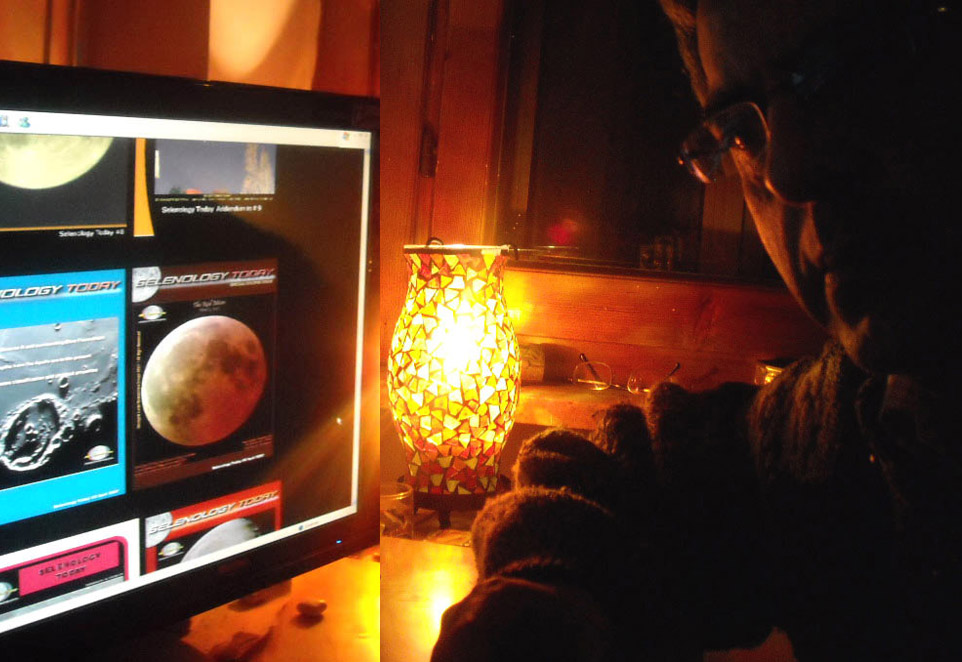Difference between revisions of "March 4, 2009"
| Line 1: | Line 1: | ||
__NOTOC__ | __NOTOC__ | ||
=People Pod= | =People Pod= | ||
| − | |||
<!-- ws:start:WikiTextHeadingRule:2:<h1> --> | <!-- ws:start:WikiTextHeadingRule:2:<h1> --> | ||
<!-- ws:start:WikiTextLocalImageRule:8:<img src="/file/view/LPOD-Mar4-09.jpg/60679420/LPOD-Mar4-09.jpg" alt="" title="" style="width: 800px;" /> -->[[File:LPOD-Mar4-09.jpg|LPOD-Mar4-09.jpg]]<!-- ws:end:WikiTextLocalImageRule:8 --><br /> | <!-- ws:start:WikiTextLocalImageRule:8:<img src="/file/view/LPOD-Mar4-09.jpg/60679420/LPOD-Mar4-09.jpg" alt="" title="" style="width: 800px;" /> -->[[File:LPOD-Mar4-09.jpg|LPOD-Mar4-09.jpg]]<!-- ws:end:WikiTextLocalImageRule:8 --><br /> | ||
| − | <em>image by [mailto:gibbidomine@libero.it Raf Lena], Rome. Italy</em><br /> | + | <em>image by [mailto:gibbidomine@libero.it" rel="nofollow Raf Lena], Rome. Italy</em><br /> |
<br /> | <br /> | ||
<em>The P in LPOD nominally stands for Photo, but also People, for every lunar image, map or globe ever made was from the hands, eyes and brains of dedicated people who used a telescope or built a spacecraft. Here is the first of a series of occasional LPODs about people currently studying the Moon, or their classic predecessors. I welcome contributions.</em><br /> | <em>The P in LPOD nominally stands for Photo, but also People, for every lunar image, map or globe ever made was from the hands, eyes and brains of dedicated people who used a telescope or built a spacecraft. Here is the first of a series of occasional LPODs about people currently studying the Moon, or their classic predecessors. I welcome contributions.</em><br /> | ||
<br /> | <br /> | ||
| − | Raffaello Lena and his colleagues have elevated amateur lunar studies to the professional level. Over the last decade the [http://www.glrgroup.eu/old/home.htm Geologic Lunar Research Group] that Raf founded has produced dozens of published studies of lunar domes, faults and transient phenomena. Raf has been interested in the Moon since he was 10 years old and has progressed from a small Newtonian telescope to high quality scopes (6" Maksutov Cassegrain and a 5" refractor). He is also the leader of the editorial board of <em>[http://digilander.libero.it/glrgroup/ Selenology Today]</em>, a journal that has produced the highest level of amateur lunar studies since the 1800s when gentleman scientists mapped the Moon. Like all amateurs, Raf has a reallife job in a different field. He has a doctorate in pharmaceutical sciences from the University of Rome and works with the Italian Ministry of Health on food safety. And whenever possible he listens to jazz and explores Italy’s volcanoes and mountainous geology.<br /> | + | Raffaello Lena and his colleagues have elevated amateur lunar studies to the professional level. Over the last decade the [http://www.glrgroup.eu/old/home.htm" rel="nofollow Geologic Lunar Research Group] that Raf founded has produced dozens of published studies of lunar domes, faults and transient phenomena. Raf has been interested in the Moon since he was 10 years old and has progressed from a small Newtonian telescope to high quality scopes (6" Maksutov Cassegrain and a 5" refractor). He is also the leader of the editorial board of <em>[http://digilander.libero.it/glrgroup/" rel="nofollow Selenology Today]</em>, a journal that has produced the highest level of amateur lunar studies since the 1800s when gentleman scientists mapped the Moon. Like all amateurs, Raf has a reallife job in a different field. He has a doctorate in pharmaceutical sciences from the University of Rome and works with the Italian Ministry of Health on food safety. And whenever possible he listens to jazz and explores Italy’s volcanoes and mountainous geology.<br /> |
<br /> | <br /> | ||
| − | <em>[mailto:tychocrater@yahoo.com Chuck Wood]</em><br /> | + | <em>[mailto:tychocrater@yahoo.com" rel="nofollow Chuck Wood]</em><br /> |
<br /> | <br /> | ||
<br /> | <br /> | ||
<hr /> | <hr /> | ||
Revision as of 18:05, 4 January 2015
People Pod

image by " rel="nofollow Raf Lena, Rome. Italy
The P in LPOD nominally stands for Photo, but also People, for every lunar image, map or globe ever made was from the hands, eyes and brains of dedicated people who used a telescope or built a spacecraft. Here is the first of a series of occasional LPODs about people currently studying the Moon, or their classic predecessors. I welcome contributions.
Raffaello Lena and his colleagues have elevated amateur lunar studies to the professional level. Over the last decade the " rel="nofollow Geologic Lunar Research Group that Raf founded has produced dozens of published studies of lunar domes, faults and transient phenomena. Raf has been interested in the Moon since he was 10 years old and has progressed from a small Newtonian telescope to high quality scopes (6" Maksutov Cassegrain and a 5" refractor). He is also the leader of the editorial board of " rel="nofollow Selenology Today, a journal that has produced the highest level of amateur lunar studies since the 1800s when gentleman scientists mapped the Moon. Like all amateurs, Raf has a reallife job in a different field. He has a doctorate in pharmaceutical sciences from the University of Rome and works with the Italian Ministry of Health on food safety. And whenever possible he listens to jazz and explores Italy’s volcanoes and mountainous geology.
" rel="nofollow Chuck Wood



